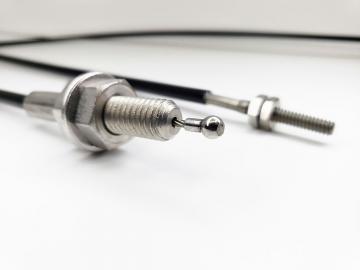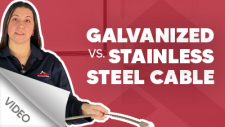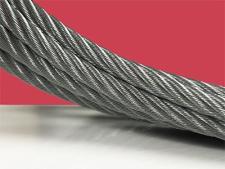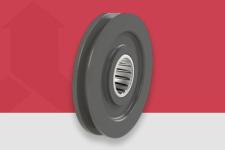What is a Control Cable?
A control cable is made from mechanical cable (wire rope), which is typically constructed with galvanized steel, stainless steel or other alloys. Control cables are an assembly or system of cables and components, such as a ball and shank fitting, where there is an input or action that causes an output or outcome.
For instance, the rudder used in an aircraft are actuated by pedals located at the pilot’s feet. The pilot applies force and distance to the pedals, which translates those actions to the rudder of the plane. From there, the plane’s yaw is adjusted according to the application of force and distance of the pedals. Apply a small amount of force and distance, and only a slight change in flight is achieved. Conversely, pressing more and further on the pedals results in more aggressive change in flight characteristics. Control cables are solely responsible for the mechanical movement of the plane’s yaw.
So, a control cable assembly, otherwise known as a push pull cable assembly, actuates motion from a distance. In the case of the aircraft’s rudder, the pedals are in the cockpit, but the rudder is on the vertical stabilizer, at the back of the plane.
Control Cable Components
Push pull or control cables generally consist of a casing, otherwise known as a conduit, that guides the mechanical cable to its destination, and protects it from particulates and other invasive environmental elements. When the control cable is pushed for example, through the conduit, compression is being applied to the cable. The casing prevents the cable from buckling to allow that push force to be translated to the end of the motion system. The walls of the conduit ensure the cable smoothly traverses the system without threats of damage to the stranded wire rope. Conversely, when pull is applied to the control cable, the system is in tension, thus eliminating the risk of buckling.
The conduit used in a control cable assembly is designed to a specific length and the ends of the conduit, and cable, can each be configured with or without fittings. When the conduit and/or the cable need to first be installed into a larger motion control system, fittings may need to be applied after the control cable assembly is routed through the application’s tight spaces. Alternative, fittings that terminate the conduit and/or cable are attached and the entire control cable assembly is deployed in the motion control system.

Depending on the intended cable assembly load, Sava’s engineers produce control cables and control cable assemblies in diameters ranging from 0.030” to 0.140” in ID. Control cables can be made larger, up to between 0.1875” and 0.25”. It is critical that design engineers consult with the Sava’s mechanical engineers, who are producing the control cable assemblies. This collaboration ensures that the customer’s control cables satisfy the application’s demands.
The interior walls of the conduit may comprise a lining made from high-density materials like nylon, Delrin or Teflon. Conduit lining is ideal in applications where the control cable assembly requires low friction and repeated motion are paramount to smooth movement being achieved. In the case of aircraft, where the pilot will need to actuate the rudder throughout the lifespan of the plane, conduit lined with teflon, for instance, promises the pilot smooth, fluid control over the yaw of the aircraft. In an aircraft’s ejection seat application, however, the control cable assembly is used once - to release the pilot into the air and safely away from the ailing aircraft. In this case, using a teflon-lined conduit wouldn’t be appropriate because only one usage is indicated in the control system’s design.
Conduit lining is made from materials that possess a low coefficient of friction, which allows the inner cable to glide through the conduit fluidly. Without the lining, the interaction between the conduit and the cable would introduce higher friction, thus decreasing output force. For example, if one applies 10 lbs of force to the control system, and the existence of friction within the control cable assembly reduces the applied force, the output is likewise reduced accordingly.
Application Areas of Push Pull Cables
Carl Stahl Sava Industries’ push pull cables are suitable for a wide range of industry applications. Here are the primary areas of use:
Choosing Control Cables
When deciding which control cable suits your application, there are many elements to consider, which is why working with the engineers at Sava is essential. Sava’s engineers will make sure your control cables meet the exact application requirements. Here are the different elements to consider:
- Cable Flexibility – Your control cables must satisfy flexibility requirements. Cables with too much bend radii may result in unwanted loss of power. Too rigid and your control cables may not navigate tight radii.
- Installation – For optimal cable functionality, consider whether it's an indoor or outdoor installation. It's also important to pay attention to the surrounding environmental conditions.
- Size – The size of the push pull cable depends on its current load and bend radii requirements.
Carl Stahl Sava Industries is an industry leader offering numerous products for vast applications. Sava is a reputable manufacturer that you can count on for a wide selection of stock and custom cables. Contact us to make a more informed decision.






